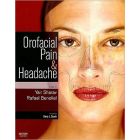Orofacial Pain and Headache
Orofacial (oro, “oral or mouth” and facial, “face”) pain (OFP) refers to pain in the head region, particularly the face, mouth, and neck. Wherever OFP is located, it is always accompanied by headache. This may be associated with disturbances in the musculoskeletal and nervous system. According to Shephard (2013), 25% of the population has suffered from OFP, with the 18-to 25-year-old-age group having the highest prevalence of orofacial pain and headache.
In general, OFPs have several categories based on location and characteristics of pain. These categories include OFPs of the mouth usually caused by infection, neurovascular usually caused by stroke, neural trauma, and unusual pains with unknown causes, and lastly, of muscular and skeletal disorders. In the grand scheme of things, studies about OFPs can provide a breakthrough to a greater understanding of headaches.
One of the most typical forms of OFP involving the neurovascular type is migraine. It affects either the first or second third division of the trigeminal nerve giving a pain that is described as throbbing and can last longer than 60 minutes. It is accompanied by nausea, vomiting, and tooth sensitivity.
Another example of OFP with obvious accompanying headache as a symptom is a cephalgia (headache) related to compression of the trigeminal nerve. It is characterized by facial pain with short-lasting headaches and conjunctival infection. Usually, headache is just on one side.
Also, there are headaches related to temporo-mandibular diseases (TMD). The temporo-mandibular joint is found near the ear and basically aids in chewing, talking, and laughing. Majority of patients with TMD report pain that scientists conclude that in some cases, there is a clear relationship between headache and neurovascular triggers leading to OFPs.
Therefore, it is essential for healthcare providers to conduct a comprehensive physical assessment and history taking in order to gather compact and reliable assessment data. This is important to arrive at an accurate method of diagnosing OFPs and systems of affectation. Open-ended questions must be utilized in order for patients to give a detailed description of the pain.
In addition to thorough physical assessment and history taking, other diseases present must be given importance to rule out relationships of manifestations present. Also, significant life events, sources of stressors, and how pain affects patient’s activities of daily living must be noted.
In conclusion, orofacial pain and headache can affect as many as a quarter of the world’s population. Mismanaging this tricky health condition only means a higher health cost, morbidity, and even mortality rates. Since the pain is potentially damaging, it puts a higher risk of disappointment to people by not being able to meet what is expected of them in terms of their daily activities, roles, and responsibilities. Also, since psychological impacts are one of the most common triggers behind pain and headache, ruling out the existence of any trauma can help in delivering a successful management. Individuals observed to be positive for manifesting early signs indicative of OFPs must be provided with adequate health teachings about self-care, stress-reduction, relaxation therapies, and responsible use of pain medications.



